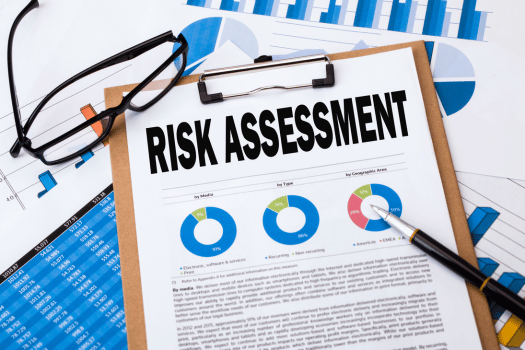
Introduction
Fraud prevention is a critical concern for organizations, whether it’s in banking, e-commerce, or other sectors. While there are numerous technologies and methods to detect and prevent fraud, one of the most fundamental starting points is risk assessment. This process is fundamental to any comprehensive fraud prevention strategy. Ignoring this step can lead to weaknesses in the system that may be exploited by fraudsters. This blog post aims to examine the world of risk assessment, exploring its importance, methodology, and how it synergizes with other fraud prevention technologies and strategies.
What is Risk Assessment?
Risk assessment is a systematic approach to identifying and evaluating risks that a business may face in specific scenarios, particularly related to fraud. It offers a structured way to understand both the likelihood of different kinds of fraudulent activities occurring and the impact such activities could have on an organization.
Why is Risk Assessment Crucial?
-
Contextual Understanding:
Every organization is unique. The nature of transactions, the customer base, the geographical presence, and the regulatory landscape all contribute to an organization’s risk profile. Risk assessment allows for the customization of fraud prevention measures, tailoring them to the specific needs and vulnerabilities of a business.
-
Proactive Fraud Detection:
Risk assessment doesn’t just help organizations respond to fraud; it prepares them to anticipate it. By understanding the avenues through which fraudulent activities might occur, businesses can set up early warning systems or deterrents, making it harder for fraudsters to succeed.
-
Financial Health and Sustainability:
Financial fraud can lead to significant losses. For some companies, especially smaller ones, a single instance of fraud could be disastrous. Risk assessments help identify weak spots and reinforce them, ensuring the company’s financial health isn’t compromised.
-
Regulatory and Compliance Necessities:
Many industries have regulatory bodies that enforce certain standards to prevent fraud. Failing to meet these standards not only opens up a company to fraud but also to legal consequences. Regular risk assessments ensure that businesses remain compliant with these evolving standards.
-
Reputation Management:
A company’s reputation can be significantly tarnished if it falls victim to fraud, especially if it’s found that the fraud occurred due to negligence. By routinely conducting risk assessments, companies demonstrate their commitment to safeguarding their stakeholders’ interests.
-
Improved Decision Making:
With a clear understanding of potential risks, management can make more informed decisions. Whether it’s deciding on a new vendor, launching a new product, or entering a new market, understanding the associated fraud risks can guide strategy effectively.
-
Resource Allocation:
Not every department or process within an organization faces the same level of risk. By identifying higher-risk areas, resources—both in terms of manpower and capital—can be more efficiently allocated to address these vulnerabilities.
-
Encouraging a Culture of Awareness:
Routine risk assessments foster an organizational culture where staff at all levels are more alert to the signs of fraud. This collective vigilance becomes a formidable defense against fraudulent activities.
-
Evolving with the Threat Landscape:
Fraudulent strategies evolve, leveraging new technologies and adapting to countermeasures. Regular risk assessments ensure that an organization’s defenses are updated to combat the latest tactics employed by fraudsters.
The Methodology of Risk Assessment: An In-Depth Look
A well-structured methodology forms the cornerstone of any risk assessment process. Each step is crucial for ensuring that the most accurate and actionable insights are gleaned. Understanding this methodology can empower an organization to take proactive measures against fraud. Let’s delve into the key steps in detail.
1. Identify Assets
The first order of business is to determine what you’re trying to protect. In the realm of fraud prevention, ‘assets’ can refer to a multitude of elements:
- Financial Assets: This includes funds, investments, and other monetary resources that could be direct targets for fraud.
- Data Assets: Personal customer data, employee data, and sensitive business information are all high-value targets for fraudsters.
- Transactional Integrity: This refers to the normal flow of transactions that, if disrupted or manipulated, can lead to fraud.
By identifying these assets, an organization can focus on what is truly at risk and design appropriate measures to safeguard them.
2. Identify Vulnerabilities
Once assets are clearly defined, the next step is recognizing the potential vulnerabilities, or weak points, that could be exploited.
- Technical Vulnerabilities: This could include outdated software, lack of encryption, or weaknesses in network security.
- Operational Vulnerabilities: Inadequate employee training, manual errors, or insufficient oversight in financial reporting can also be exploited.
- External Vulnerabilities: Sometimes, vulnerabilities exist outside the organization, such as with third-party vendors or in the broader cyber environment.
Identifying vulnerabilities is often an ongoing, iterative process that involves regular audits, pen-testing, and external evaluations.
3. Evaluate Risks
After identifying the vulnerabilities, it’s crucial to evaluate the associated risks. This involves:
- Likelihood Assessment: What is the probability of a particular vulnerability being exploited? This often involves historical data, statistical analysis, and expert judgment.
- Impact Assessment: Should the vulnerability be exploited, what would be the scale of damage? This is often quantified in financial terms but can also include reputational damage or loss of customer trust.
- Risk Scoring: Organizations often use a scoring system to rank risks, often represented on a scale from ‘Low’ to ‘High.’ This helps in prioritizing actions.
4. Implement Controls
Based on the risk evaluations, the next step is to implement controls aimed at mitigating these risks. Controls can be:
- Preventive Controls: Measures designed to prevent an event from occurring, like multi-factor authentication for financial transactions.
- Detective Controls: Systems set up to detect and alert when a risky event occurs, such as intrusion detection systems.
- Corrective Controls: These are actions taken to restore normal operations after a risky event has occurred, like a rollback procedure for compromised transactions.
5. Review and Update
Risk assessment is not a one-time activity. The risk landscape is continually evolving due to technological advances, new forms of fraud, and changes in organizational structures.
- Regular Audits: Periodic evaluations should be conducted to check the effectiveness of the implemented controls.
- Update Risk Profiles: As new data is gathered, risk profiles should be updated to reflect the current state of risks.
- Stakeholder Reviews: Involve relevant stakeholders, including department heads, legal teams, and even board members in the review process. This ensures a multi-disciplinary approach to understanding risks.
By understanding each of these steps in detail, organizations can have a comprehensive, actionable, and up-to-date risk assessment that serves as a strong foundation for an effective fraud prevention strategy.
Synergy with Other Fraud Prevention Techniques
Once the risks are adequately assessed and prioritized, organizations can then apply various fraud prevention technologies and strategies more effectively. Here’s how:
1. Rule-Based Systems
If your risk assessment identifies frequent high-value transactions as a significant risk factor, then setting up rule-based systems to flag these transactions for manual review can be highly effective.
2. Machine Learning and AI
Risk assessment data can serve as an invaluable foundation for training machine learning algorithms, focusing them on the types of fraud most likely to occur in your specific business context.
3. Real-time Analytics
Understanding your organization’s most pressing risks can help configure real-time analytics tools more effectively, setting them to monitor transactions that are most likely to be fraudulent based on your risk profile.
4. Behavioral Analytics
Risk assessment can identify which user behaviors are most commonly associated with fraudulent activities, making your behavioral analytics tools more accurate and effective.
Challenges and Limitations
1. Data Quality
A risk assessment is only as good as the data it’s based on. Incomplete or outdated data can lead to incorrect assessments.
2. Complexity
Particularly in large organizations, the sheer number of variables involved can make risk assessments highly complex, requiring specialized expertise.
3. False Sense of Security
Over-reliance on risk assessments can sometimes lead to complacency, with the assumption that all significant risks have been accounted for and managed.
Conclusion
Risk assessment is a vital, foundational step in fraud prevention. It offers a structured way to understand your organization’s unique risk profile, enabling you to implement the most effective and efficient fraud prevention strategies. While there are challenges and limitations to the process, the benefits, in terms of resource allocation, regulatory compliance, and proactive fraud prevention, make it an indispensable tool in the fight against fraud.
By understanding your organization’s vulnerabilities, you can make educated decisions about where to focus your fraud prevention efforts, which technologies to implement, and how to train your staff. Ultimately, a well-executed risk assessment allows you to stay one step ahead of fraudsters, protecting your organization and its valuable assets.







